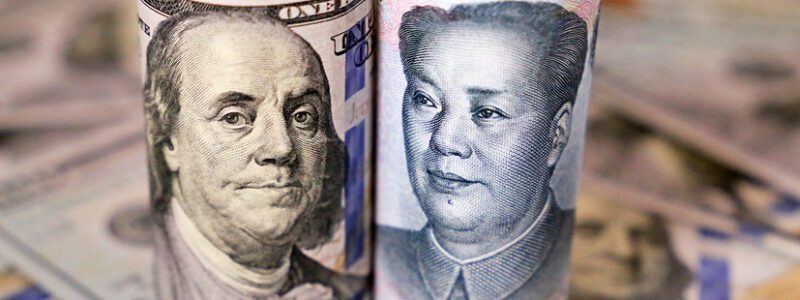
The Chinese yuan fell against the dollar to its lowest level since 2008 amid signals from Beijing weakening support for the currency.
The yuan, which trades on the territory of mainland China, fell to 7.2235/$1 compared to 7.176/$1 at the close of the previous session. The value is at the lowest level in 14 years.
The People’s Bank of China (PBOC, the country’s central bank) signaled it was prepared to allow the yuan to weaken, setting a reference rate of 7.1107 yuan/$1, the lowest level in more than two years. The market rate of the yuan may deviate from the reference rate by no more than 2% in one direction or another during the session.
The offshore yuan (traded in Hong Kong) fell to a record low since the introduction of the separate trading system in 2010 and stands at 7.2298 yuan/$1 by 09:00 Moscow time against 7.1795 yuan/$1.
Meanwhile, the US dollar is actively growing against other currencies on Wednesday morning. The ICE-calculated index, which shows the dynamics of the dollar against six currencies (the euro, the Swiss franc, the yen, the Canadian dollar, the pound sterling and the Swedish krona), adds 0.38% in the course of trading. The broader WSJ Dollar is up 0.3%.
The EUR/USD pair is trading at $0.9564 as of 9:10 Moscow time, compared to $0.9596 at the close of the previous session.
The pound sterling depreciates in the course of trading to $1.0696 compared to $1.0734 the day before.
And only the yen slightly rises against the dollar and is 144.67 yen at 09:11 Moscow time against 144.81 yen following the results of the previous session.
Experts believe that the US currency will continue to strengthen against the background of the rapid tightening of monetary policy by the Federal Reserve System (FRS). In addition, the dollar is supported by a decrease in risk appetite in world markets.
A further increase in volatility in financial markets will help strengthen the dollar due to its status as a “safe haven” currency, said Carol Kong, an analyst for the CBA foreign exchange market.